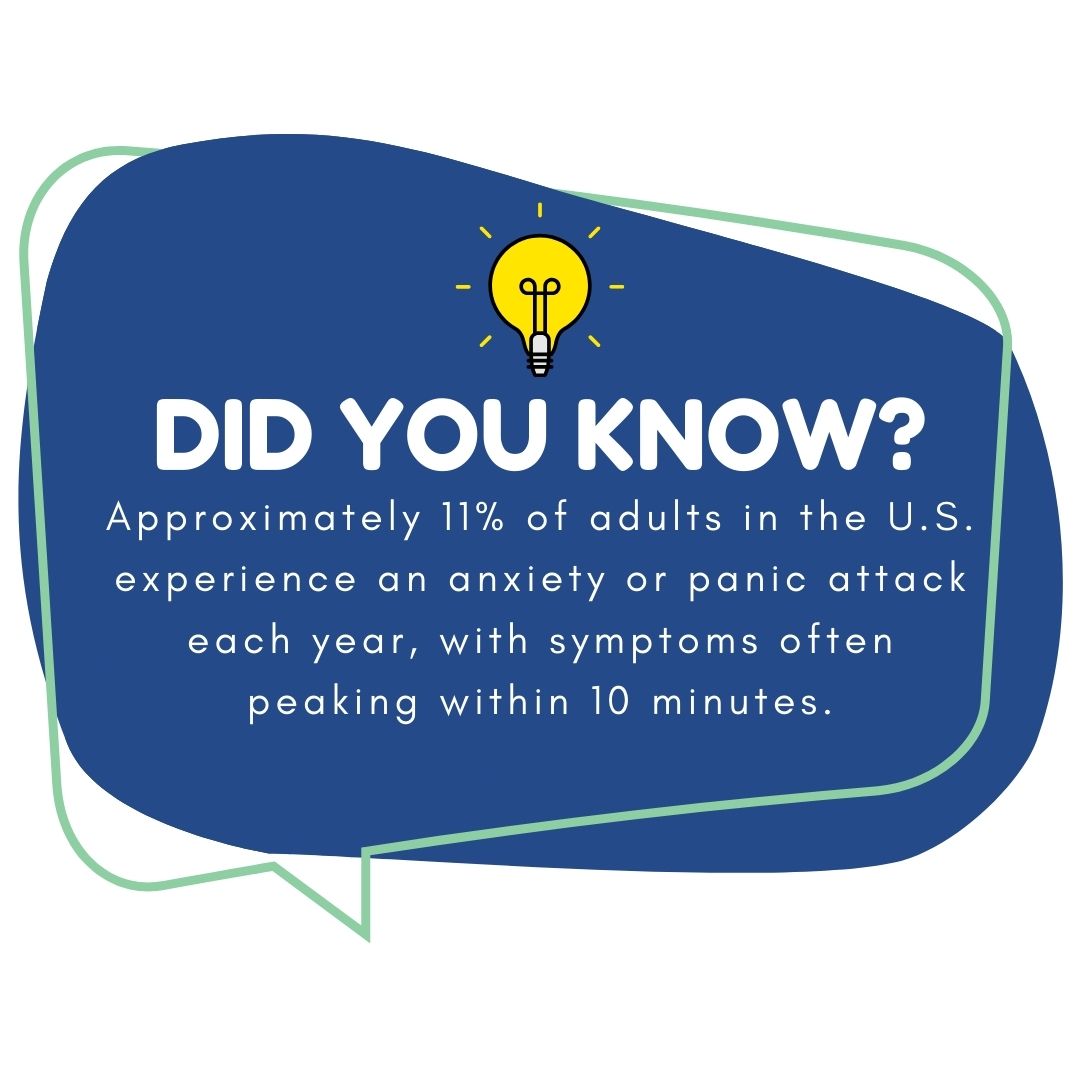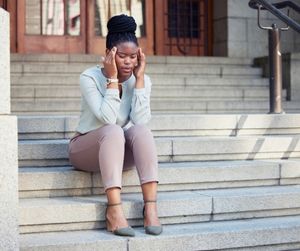What Does an Anxiety Attack Feel Like: Understanding the Symptoms and Experience
Anxiety attacks can be overwhelming and frightening experiences. During an anxiety attack, individuals often feel intense fear, a racing heartbeat, or shortness of breath. Many describe a feeling of losing control or an impending doom, which can make the experience even more distressing.
Physical symptoms like tingling in the hands or feet, sweating, or trembling can also occur. These sensations may last for a few minutes but can feel much longer to those experiencing them. Understanding these feelings can help those affected know they are not alone and that support is available.
Recognizing the signs of an anxiety attack is the first step toward managing symptoms and seeking help. Many people experience these attacks differently, but knowing what to expect can provide comfort and reassurance.
Symptoms of an Anxiety Attack
Anxiety attacks involve various symptoms that affect the body and mind. Understanding these symptoms can help identify when an anxiety attack is occurring and how to manage it.
Physical Symptoms
During an anxiety attack, a person may experience several physical symptoms. Common signs include:
- Rapid heart rate: The heart may feel like it is racing or pounding.
- Shortness of breath: Breathing can become shallow or difficult.
- Sweating: Increased perspiration is common, even in cool environments.
- Trembling or shaking: Muscles may twitch or shake involuntarily.
- Chest pain: Some might feel tightness or discomfort in the chest area.
- Dizziness: Feeling lightheaded or faint is also frequent.
These physical symptoms can be alarming and may make someone feel like they are having a heart attack.
Emotional Symptoms
Emotional symptoms of anxiety attacks can be just as intense. They often include:
- Fear of losing control: Many individuals feel overwhelmed and fear they cannot handle the situation.
- Sense of doom: A feeling that something terrible is about to happen can arise.
- Intense worry: People may panic about what is occurring or fear it will happen again.
- Feeling detached: They might feel disconnected from reality or themselves.
These emotional responses can make the experience even more distressing, leading to a cycle of fear and anxiety.
Cognitive Symptoms
Cognitive symptoms affect how a person thinks during an anxiety attack. They often include:
- Racing thoughts: The mind may race with worry or fear.
- Difficulty concentrating: It can be hard to focus on anything other than panic.
- Memory issues: Some might struggle to remember simple things or feel confused.
- Negative thoughts: There may be a strong focus on worst-case scenarios.
These cognitive effects can make managing daily tasks extremely challenging during and after an anxiety attack.

Source: National Institute of Mental Health
Triggers and Risk Factors
Anxiety attacks can be triggered by various factors. Recognizing these triggers can help individuals manage their symptoms.
Common Triggers:
- Stressful Events: Major life changes, such as moving or changing jobs, can prompt anxiety.
- Health Issues: Chronic illnesses or serious health concerns may increase anxiety levels.
- Substance Use: Caffeine, alcohol, or drug use can lead to anxiety attacks.
- Situational Factors: Being in crowded places or public speaking can cause anxiety for some.
Risk Factors:
- Genetics: A family history of anxiety can raise the likelihood of experiencing anxiety attacks.
- Personality Traits: Individuals with certain traits, like being more sensitive, may be more vulnerable.
- Environment: Growing up in a stressful or unstable environment can affect mental health.
- Previous Trauma: Experiencing traumatic events can increase the risk of anxiety disorders.
Recognizing triggers and understanding risk factors can provide valuable insight. This awareness is a key step in managing anxiety and reducing the frequency of attacks.
Managing Anxiety Attacks
Managing anxiety attacks involves both immediate strategies to cope during an attack and long-term techniques to reduce their occurrence. These methods can help individuals gain control over their symptoms and improve their overall well-being.
Immediate Coping Strategies
When an anxiety attack hits, quick actions can help. Breathing exercises are very effective. Deep, slow breaths can calm the mind. One method is to inhale for four counts, hold for four counts, then exhale for six counts.
Another helpful technique is grounding. This means focusing on the present. One can identify five things they see, four they can touch, three they can hear, two they can smell, and one they can taste. Doing this can reduce feelings of panic.
Staying active is also important. Gentle movements, like stretching or walking, can ease tension. Keeping distractions nearby, such as a favorite song or a puzzle, can also aid in managing anxiety attacks.
Long-Term Management Techniques
Long-term strategies involve lifestyle changes and therapy. Regular exercise can help reduce anxiety over time. Activities like jogging, swimming, or dancing boost mood and lower stress.
Mindfulness and meditation are useful tools. They train the mind to stay calm and present. Practicing these techniques for just a few minutes each day can make a significant difference.
Seeking therapy can provide additional support. Working with a therapist helps individuals understand their triggers. They can learn personalized coping methods tailored to their needs.
Finally, a strong support network is vital. Group therapy can be helpful. Talking openly with friends or joining support groups creates connections. These relationships provide comfort during tough times.
Frequently Asked Questions
Anxiety attacks can cause various symptoms and physical reactions. Knowing what to expect can help individuals manage these experiences better.
What are the symptoms of an anxiety attack in females?
Symptoms of anxiety attacks in females can include a racing heart, sweating, shortness of breath, and feelings of dread. They might also experience dizziness, hot flashes, or chills. Emotional symptoms like fear and irritability can occur.
How can someone calm down during an anxiety attack?
To calm down during an anxiety attack, a person can try deep breathing exercises. Focusing on slow, deep breaths can help reduce panic. Grounding techniques, like focusing on surroundings, can also help.
How long typically does an anxiety attack last?
Typically, anxiety attacks last between 5 to 30 minutes. However, some may feel lingering effects after the attack. The duration can vary from person to person.
What physical symptoms might accompany an anxiety attack?
Physical symptoms during an anxiety attack can include chest pain, muscle tension, and feeling shaky. Some may notice headaches or stomachaches as well. These symptoms can feel very intense.
How can one distinguish between a panic attack and an anxiety attack?
An anxiety attack often builds gradually, while a panic attack can start suddenly and feel more intense. Panic attacks frequently include fear of losing control or dying. Anxiety attacks usually have more prolonged feelings of worry.
What are the signs that indicate someone is having an anxiety attack?
Signs of an anxiety attack can include rapid breathing, sweating, or looking pale. The person may seem restless or withdrawn. They might also express feelings of fear or discomfort.
You’re not alone, and help is always within reach. Contact us today at (774) 619-7750 and take control over your mental health.




